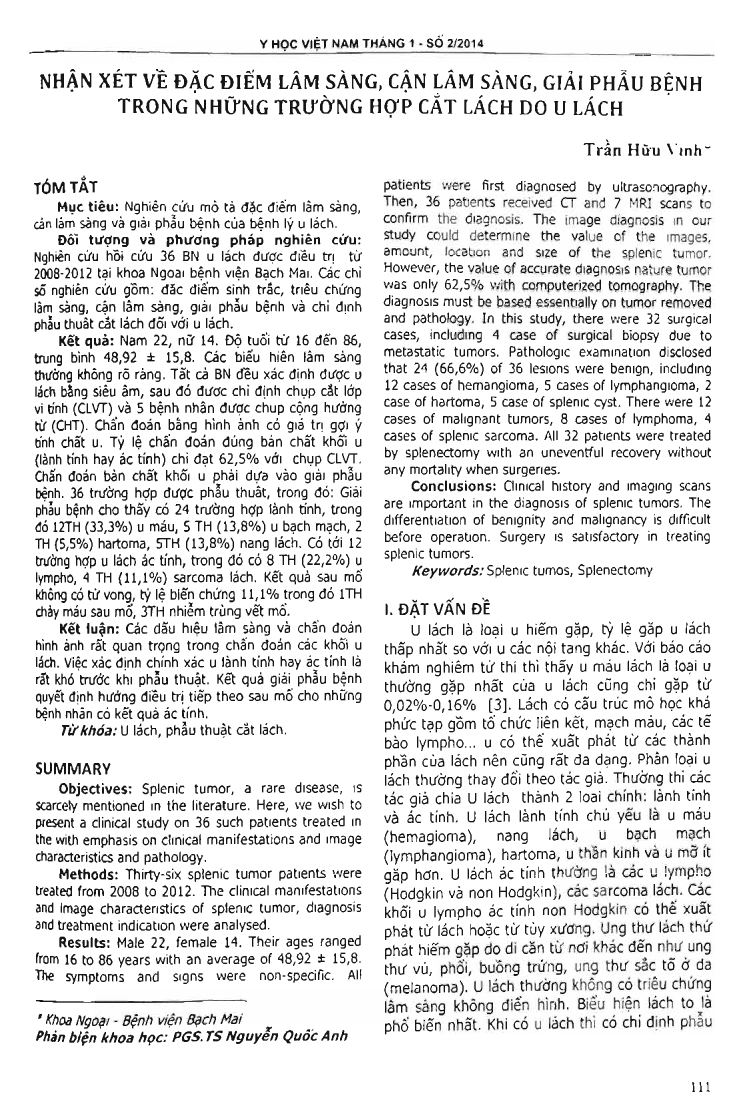
Objectives: Splenic tumor, a rare disease, is scarcely mentioned in the literature. Here, the authors wish to present a clinical study on 36 such patients treated in the with emphasis on clinical manifestations and image characteristics and pathology. Methods: Thirty-six splenic tumor patients were treated from 2008 to 2012. The clinical manifestations and image characteristics of splenic tumor, diagnosis and treatment indication were analysed. Results: Male 22, female 14. Their ages ranged from 16 to 86 years with an average of 48,92 + or - 15,8. The symptoms and signs were non-specific. All patients were first diagnosed by ultrasonography. Then, 36 patients received CT and 7 MRI scans to confirm the diagnosis. The image diagnosis in the study could determine the value of the images, amount, location and size of the splenic tumor. However, the value of accurate diagnosis nature tumor was only 62,5 percent with computerized tomography. The diagnosis must be based essentially on tumor removed and pathology. In this study, there were 32 surgical cases, including 4 case of surgical biopsy due to metastatic tumors. Pathologic examination disclosed that 24 (66,6 percent) of 36 lesions were benign, including 12 cases of hemangioma, 5 cases of lymphangioma, 2 case of hartoma, 5 case of splenic cyst. There were 12 cases of malignant tumors, 8 cases of lymphoma, 4 cases of splenic sarcoma. All 32 patients were treated by splenectomy with an uneventful recovery without any mortality when surgeries. Conclusions: Clinical history and imaging scans are important in the diagnosis of splenic tumors. The differentiation of benignity and malignancy is difficult before operation. Surgery is satisfactory in treating splenic tumors.
- Đăng nhập để gửi ý kiến
